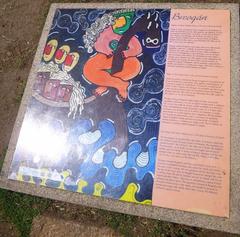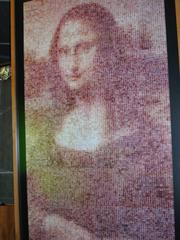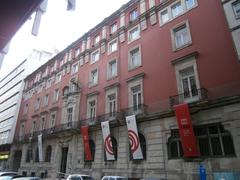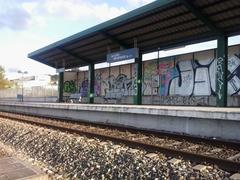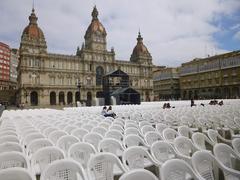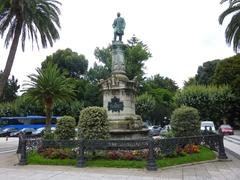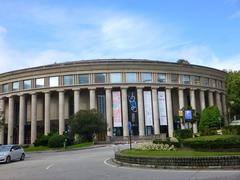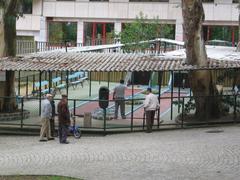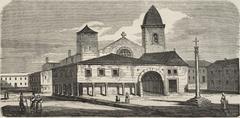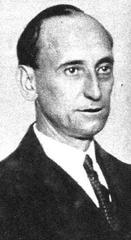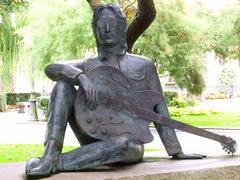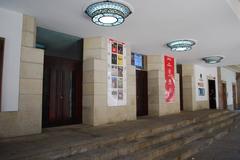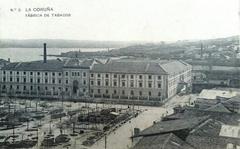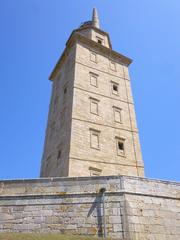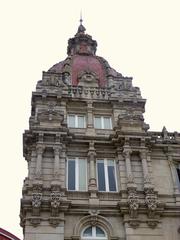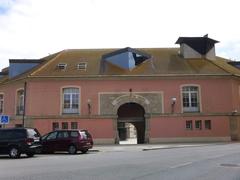
Parque De La Torre Visiting Hours, Tickets, and Guide to A Coruña Historical Sites
Date: 04/07/2025
Introduction: Cultural Significance of Parque De La Torre
Perched on the dramatic Atlantic cliffs of A Coruña, Spain, Parque De La Torre is the gateway to Galicia’s maritime legacy. At its heart stands the Tower of Hercules (Torre de Hércules)—the world’s oldest operational Roman lighthouse and a symbol of the city’s enduring relationship with the sea. Recognized as a UNESCO World Heritage Site, this nearly 2,000-year-old monument has shaped local identity through Roman engineering, medieval fortification, and evocative legends of Hercules and Celtic kings.
The park extends beyond its iconic lighthouse, encompassing the 47-hectare Parque Escultórico de la Torre de Hércules, where monumental sculptures converse with ancient petroglyphs and wild Atlantic landscapes. With modern amenities, detailed visitor information, and proximity to other cultural landmarks, Parque De La Torre is an essential stop for history lovers, families, and all who wish to experience the soul of A Coruña (UNESCO; Spain.info; coruna.gal).
Table of Contents
- Introduction
- History: Roman Origins to Modern Restoration
- Mythology, Legends, and Symbolism
- The Sculpture Park: An Open-Air Museum
- Visiting Torre de Hércules: Hours, Tickets & Accessibility
- Practical Tips and Facilities
- Top Nearby Attractions
- FAQs
- Conservation & Cultural Importance
- Key Dates and Facts
- Planning Your Visit: Summary and Recommendations
- References
History: Roman Origins to Modern Restoration
Roman Construction
Built at the turn of the 1st century AD, the Tower of Hercules served as a beacon for ships navigating the perilous northwestern Iberian coast. Roman architect Gaius Sevius Lupus designed the original Farum Brigantium, a 34-meter-high structure atop a 57-meter promontory. Its robust masonry and square base have withstood centuries of Atlantic storms, earning it distinction as the only Greco-Roman lighthouse still in use (UNESCO; Spain.info).
Medieval and Early Modern Transformations
After the fall of Rome, the tower played a crucial defensive role during the Middle Ages, serving as a lookout and fortification against maritime threats. The lighthouse experienced periods of neglect, but its core structure remained intact, preserving its Roman character (Visitargalicia).
In the late 18th century, architect Eustaquio Giannini led a comprehensive restoration, adding octagonal levels that raised the height to 55 meters and modernizing its lantern. This careful blend of Roman and neoclassical elements defines the Torre’s current appearance (UNESCO; Spain.info).
Archaeological Discoveries and World Heritage Recognition
Excavations in the 1990s revealed the original Roman foundations and Iron Age petroglyphs, further affirming the site’s deep historical roots. The discovery of a Muslim cemetery within the park highlights its multi-layered significance. In 2009, UNESCO inscribed the Tower and its park as a World Heritage Site, recognizing their exceptional value in maritime history and cultural continuity (UNESCO; Volando Sin Filtro).
Mythology, Legends, and Symbolism
The Tower’s story is woven with myth. According to legend, Hercules defeated the giant Geryon here and built the lighthouse over his grave—a tale immortalized in A Coruña’s coat of arms. The city’s symbolism blends Greco-Roman myth with Celtic tradition, as local lore also credits the Celtic king Breogán with founding the city and inspiring the Irish migration legend (Misterios y Leyendas de Galicia y Asturias; Sapos y Princesas; coruna.gal).
The Sculpture Park: An Open-Air Museum
Surrounding the lighthouse, the Parque Escultórico transforms the headland into a 47-hectare outdoor museum. Over 15 monumental works by Galician and international artists evoke themes of mythology, seafaring, and local legend. Highlights include:
- Breogán Statue: Celebrates the legendary Celtic king.
- Menhires por la Paz: A circle of granite menhirs by Manolo Paz, symbolizing Celtic heritage and peace.
- Caracola de Acero: A steel seashell at Punta Herminia, framing views of the ocean.
- Caronte: Represents the mythical ferryman linking worlds.
Interpretive signage and QR codes offer historical and artistic context in multiple languages (Espanaviajar; vivirnoescaro.com; Brogan Abroad).
Visiting Torre de Hércules: Hours, Tickets & Accessibility
Hours
- September 16 – June 15: 10:00–17:00 (last entry 15:45)
- June 16 – September 15: 10:00–21:00 (last entry 19:45)
- Closed: December 24, 25, 31; January 1, 5 (afternoon), and 6
- Note: The tower may close during high winds (force 7+ for tower, force 5+ for terrace). Always check the official site for updates.
Tickets
- General Admission: €3
- Reduced (students, seniors): €1.50
- Children under 12: Free
- Mondays: Free, but ticket still required from CIAV
- Booking: Purchase at the Visitor Centre (CIAV) from 9:45 a.m. or online. Entry is limited to 20 people each half hour; advance booking is strongly recommended during peak times.
Accessibility
- The park’s paved paths are suitable for wheelchairs and strollers. The interior of the tower (234 steps) is not accessible for those with mobility difficulties.
- Families and visitors with reduced mobility can enjoy the sculpture park, viewpoints, and picnic areas.
Guided Tours
- Guided tours in multiple languages are available and provide deeper insight into the tower’s history, myth, and art. Tours can be booked online or at the visitor center (coruna.gal).
Practical Tips and Facilities
- Getting There: Well served by city buses; free parking is available near both main entrances (vivirnoescaro.com).
- Restrooms: Available at the Visitor Centre.
- Food: Limited kiosks within the park; more cafes and restaurants can be found in the city center.
- Weather: The Atlantic can bring rapid changes—bring a jacket or windbreaker even in summer.
- Safety: Stay on marked trails, especially near cliff edges. Supervise children.
- Pets: Dogs are welcome if leashed; owners must clean up after them (adventurebackpack.com).
Top Nearby Attractions
- Castillo de San Antón: 16th-century sea fort and museum.
- Aquarium Finisterrae: Marine life exhibits focusing on the Atlantic (Spain Guide Now).
- Domus Museum: Interactive science museum devoted to the human body.
- Old Town (Cidade Vella): Medieval streets, plazas, and tapas bars (Brogan Abroad).
- Playa de las Lapas: Small sandy beach below the tower, accessible via stairs.
Frequently Asked Questions (FAQs)
Q: What are the Tower of Hercules visiting hours?
A: 10:00–17:00 (Sep 16–Jun 15), 10:00–21:00 (Jun 16–Sep 15). Closed select holidays. Check here for current hours.
Q: How do I buy tickets?
A: Purchase online or at the CIAV Visitor Centre. Free entry on Mondays (ticket still required).
Q: Is the park wheelchair accessible?
A: Yes, most paths are accessible, but the tower’s stairs are not.
Q: Are pets allowed?
A: Yes, dogs must be leashed.
Q: Are guided tours available?
A: Yes, in several languages. Book online or at the Visitor Centre.
Conservation & Cultural Importance
The park’s preservation is ensured through local, national, and international cooperation, anchored by its UNESCO designation. Ongoing conservation, interpretation, and educational programs foster appreciation for its rich heritage and ensure sustainable visitor experiences (Caminosantiago Compostela).
Key Dates and Facts
- 1st century AD: Original Roman lighthouse constructed.
- Middle Ages: Repurposed as a defensive tower.
- 1791: Eustaquio Giannini’s restoration, current height 55 meters.
- 1990s: Archaeological excavations reveal Roman and Iron Age remains.
- 2009: Inscribed as a UNESCO World Heritage Site.
- 47 hectares: Total park area.
- 234 steps: Staircase inside the tower (Spain.info).
Planning Your Visit: Summary and Recommendations
- Check official hours and book tickets in advance.
- Explore both the lighthouse and the sculpture park for a full experience.
- Bring suitable clothing for wind and weather.
- Download the Audiala app for audio guides and real-time updates.
- Combine your visit with other A Coruña attractions for a comprehensive city experience.
Respect the park’s heritage by following guidelines, staying on marked paths, and leaving no trace.
References
- UNESCO World Heritage Centre: Torre de Hércules
- Spain.info: Torre de Hércules
- Official Visitor Information, coruna.gal
- Guía para Visitar la Torre de Hércules y su Parque Escultórico, vivirnoescaro.com
- Mythology and Legends, coruna.gal
- Brogan Abroad, Things to Do in A Coruña
- Volando Sin Filtro, Torre de Hércules History and Practical Info, 2021
- Misterios y Leyendas de Galicia y Asturias, 2025
- Espanaviajar, Parque Escultórico
- Caminosantiago Compostela, Tower of Hercules Conservation
- La Voz de Galicia, Cultural Events at Parque de la Torre, 2025









